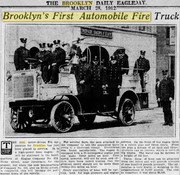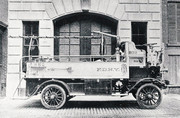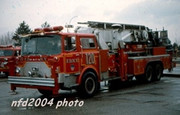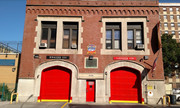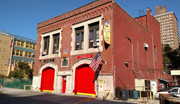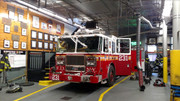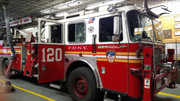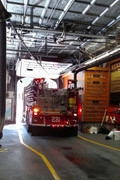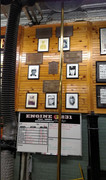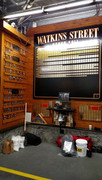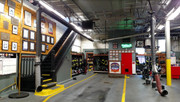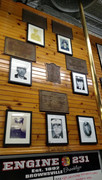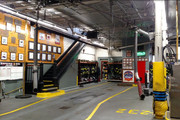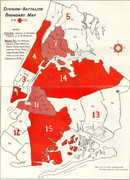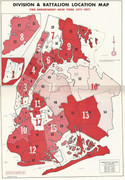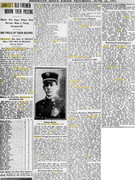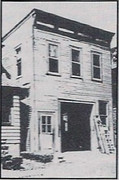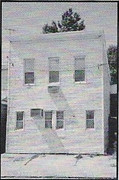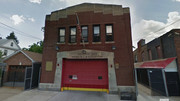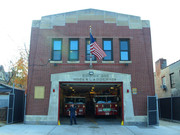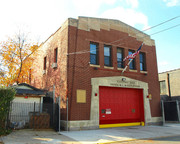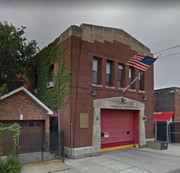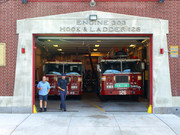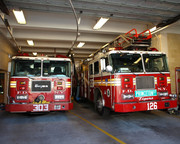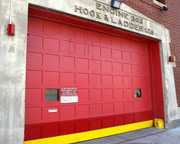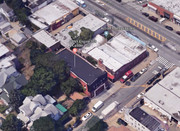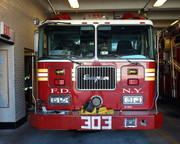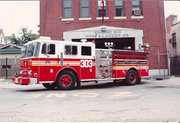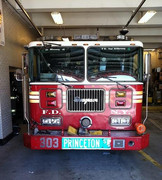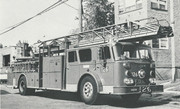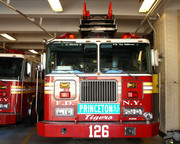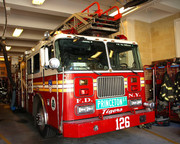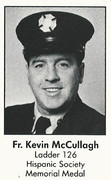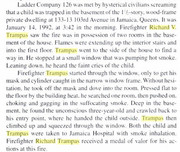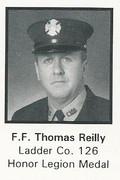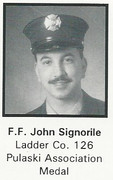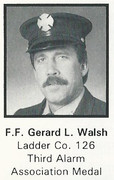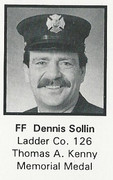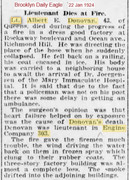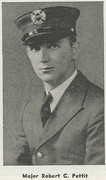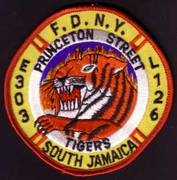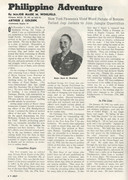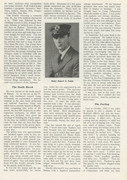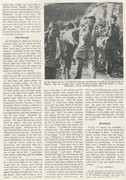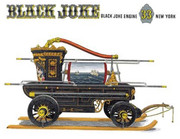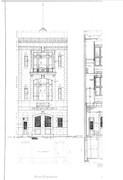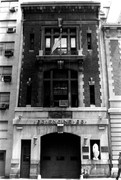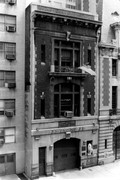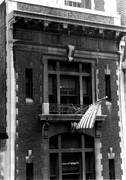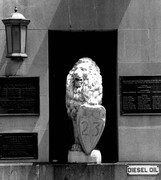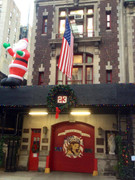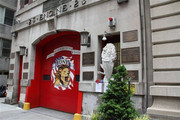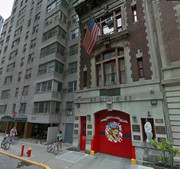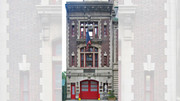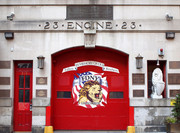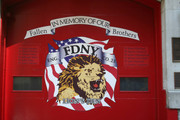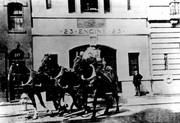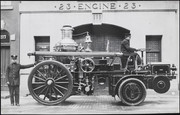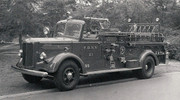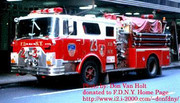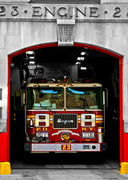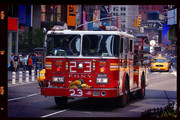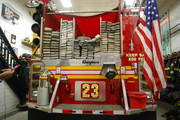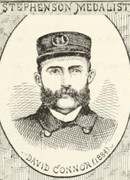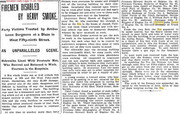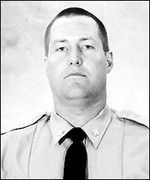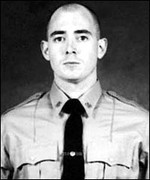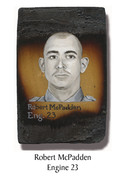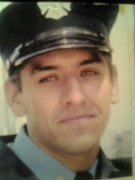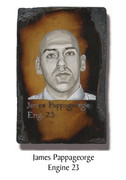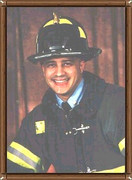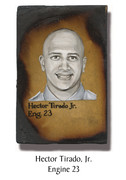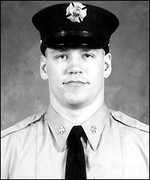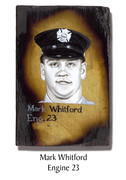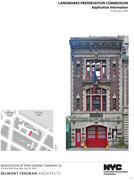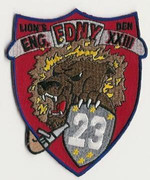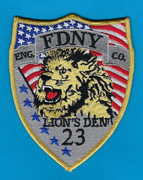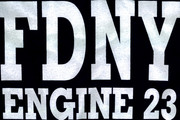Engine 231 Medals:
EDWARD W. STIEHLER FF. ENG. 231 JAN. 30, 1922 1923 KENNY
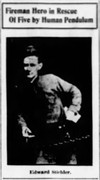
On January. 30th, 1922 ? FF Steihler was hung by his ankles by his comrades ?pendulum style? from a cornice of a 3 story building at 251 Christopher Ave. to effect the rescue of 5 people who were not within reach of ladders, had no fire escape, and were ready to jump if not for his quick actions.
EDWARD F. GROSS LT. ENG. 231 AUG. 22, 1924 1925 CRIMMINS
On August 22nd, 1924 Lt. Edward F. Gross rescued a young girl at 2:43AM at 319 Osbourne Street. He carried the girl out via portable ladder without a hoseline in place.
BENJAMIN LEVY CAPT. ENG. 231 1936 1937 STEPHENSON
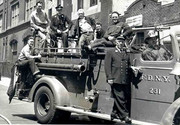
The Stephenson Medal was awarded to Captain Levy in 1936 for having maintained the best disciplined and most highly efficient company in the Department. Captain Levy would command E231 for an astonishing 27 years!
EMANUEL FRIED LT. ENG. 231 DEC. 11, 1946 1947 FDR
Awarded for his participation in the removal of a woman from the ruins of a fire and a building collapse at 489 W 184th Street at 11:59PM on December 11, 1946.
EDWARD V. WETZEL LT. ENG. 231 NOV. 4, 1965 1966 STIEFEL

On November 4th, 1965 Lt. Wetzel had a confirmed report of children trapped at 712 Stone Ave at 7:20PM. He crawled on his belly under the flames and past the fire to the rear bedroom where he found two children. Shielding them with his own body, he crawled once again past the fire and handed their limp bodies to his awaiting men. The children would survive the harrowing ordeal thanks to Lt. Wetzel?s quick instincts which were done without a mask and before a hoseline was in place.
JOSEPH A. CONIGLIO CAPT. ENG. 231 MAY 14, 1989 1990 CONNELL
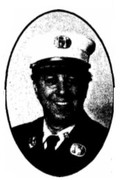
On May 14th1989 ,E 231, under the command of Capt Coniglio, responded to a project fire at 251 Osbourne Street. The job would turn out to be a long stretch to the 5th floor as the Captain entered the apartment well before a hoseline was in place. He was informed that 3 people were trapped in the rearmost bedroom. He quickly made the last room where he physically pulled a woman back in who was on the edge ready to jump. As he awaited water, he would share his air with the three occupants thereby preventing them from further panic and sure certain death.
Ladder 120 Medals:
JAMES J. MOONEY CAPT. LAD. 120 1917 STEPHENSON
Captain James F. Mooney in was awarded the Stephenson Medal for having the best disciplined company in 1916.
FRANCIS P. J. DONLON FF. LAD. 120 DEC. 21, 1929 1930 DEPARTMENT
Four days before Christmas, Firemen Francis P. J. Donlon and Charles T. Leary, Jr. rescued a mother and her four children from 445 Watkins Street
CHARLES T. LEARY, JR. FF. LAD. 120 DEC. 21, 1929 1930 DEPARTMENT
FF Charles T. Leary rescued a mother and her four children from 445 Watkins Street
AUGUSTUS KETTLER FF. LAD. 120 AUG. 7, 1929 1930 BROOKLYN CITIZENS
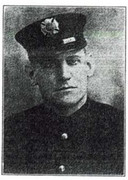
On August 7, 1929 Fireman Augustus Kettler received the Brooklyn Citizen Medal for rescuing a couple from a fire at 136 Thatford Avenue
HENRY ROHRBACH LT. LAD. 120 AUG. 7, 1929 1930 DEPARTMENT
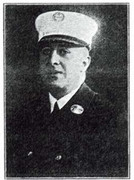
On August 7, 1929, Lieutenant Henry Rohrbach received a Department Medal for rescuing a couple from a fire at 136 Thatford Avenue
FRANK R. MAGAN FF. LAD. 120 MAR. 17, 1930 1931 BROOKLYN CITIZENS
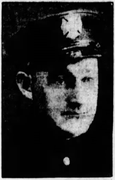
St. Patrick's Day 1930, Fireman Frank H. Magan rescued a father and his two children from 277 Watkins Street.
CHARLES H. SMITH FF. LAD. 120 NOV. 3, 1933 1934 TREVOR-WARREN
On November 3, 1934 two members of Ladder 120 rescued two people at 361 Bristol Street. The Emily Trevor-Mary B. Warren Medal was awarded to Fireman Charles H. Smith.
ROLAND G. CHURBUCK FF. LAD. 120 NOV. 3, 1933 1934 BROOKLYN CITIZENS
Roland G. Churbuck rescued two people at 361 Bristol Street.
VICTOR F. ROSSI FF. LAD. 120 OCT. 21, 1950 1951 JAMES GORDON BENNETT
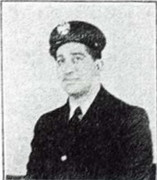
Fireman Victor F. Rossi on October 21, 1950 rescued two women from 162 Glenmore Avenue. Fireman Rossi earned the James Gordon Bennett Medal, the oldest medal awarded for bravery each year.
VICTOR F. ROSSI FF. LAD. 120 OCT. 31, 1952 1953 HUGH BONNER
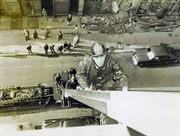
On October 31, 1952 Fireman Rossi earned the Hugh Bonner Medal for capturing a culprit who was trying to steal the 44th Battalion?s car from in front of quarters
VICTOR F. ROSSI FF. LAD. 120 OCT. 21, 1950 1954 HARRY M. ARCHER
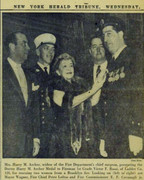
Fireman Victor F. Rossi on October 21, 1950 rescued two women from 162 Glenmore Avenue. Fireman Rossi earned the James Gordon Bennett Medal. It was also the best rescue in a three year period and he earned the Doctor Harry M. Archer Medal in 1954. This medal is given only to a James Gordon Bennett Medal winner once every three years.
JOHN F. FINNEGAN LT. LAD. 120 JUN. 4, 1958 1959 BROOKLYN CITIZENS
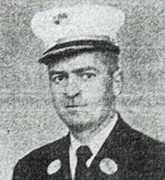
Lieutenant John F. Finnegan rescued a little girl from her burning apartment at 99 Belmont Street on June 4, 1958
CURT A. LANDGREBE LT. LAD. 120 DEC. 5, 1963 1964 DOUGHERTY
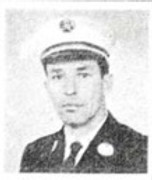
Lieutenant Curt A. Landgrebe rescued an eight year old boy from his burning apartment at 29 Hinsdale Street on December 5, 1963.
CURT A. LANDGREBE LT. LAD. 120 MAY 10, 1965 1966 BROOKLYN CITIZENS
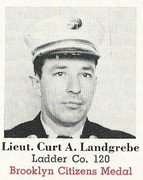
On May 10, 1965, Lieutenant Curt A. Landgrebe rescued a woman from 426 Snediker Avenue.
DANIEL J. TRACY FF. LAD. 120 MAR. 25, 1965 1966 THOMPSON
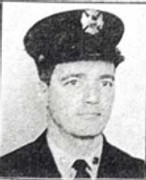
Fireman Daniel J. Tracy earned three medals in three years. The first medal, the Commissioner Edward Thompson Medal was awarded on March 25, 1965 for rescuing five children from an apartment fire at 593 Howard Avenue.
EUGENE P. TIMMONS LT. LAD. 120 NOV. 4, 1965 1966 KANE
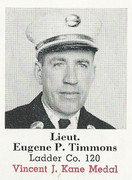
For his heroic work at 712 Stone Avenue on November 4, 1965, Lieutenant Eugene P. Timmons received the Vincent J. Kane Medal for rescuing a small boy from a burning apartment.
DANIEL J. TRACY FF. LAD. 120 APR. 23, 1966 1967 BRUMMER
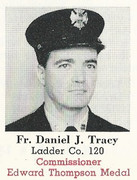
FF Tracy rescued two people from 273 Amboy Street on April 23, 1966.
DANIEL J. TRACY FF. LAD. 120 JUL. 21, 1967 1968 BROOKLYN CITIZENS
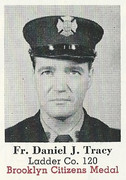
FF Tracy rescued a child from 1586 St. Marks Avenue on July 21, 1967 at extreme personal risk.
JOHN J. CONNOLLY FF. LAD. 120 JUN. 22, 1968 1969 EMERALD
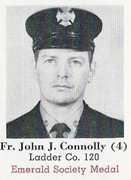
On June 22, 1968 Fireman John J. Connolly rescued a mother and her two children from 358 Hinsdale Street. The Emerald Society Medal was awarded Fireman Connolly for this rescue.
RUDOLPH A. GRECO FF. LAD. 120 APR. 3, 1970 1971 MC ELLIGOTT
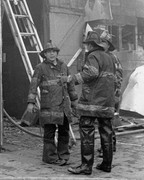
On April 3, 1970 FF Rudy Greco rescued an elderly man from the 3rd floor at 1961 Bergen Street. For his actions he was awarded John J. McElligott Medal
THOMAS J. CHERRY FF. LAD. 120 SEP. 22, 1972 1973 BROOKMAN
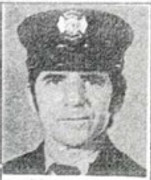
Fireman Thomas J. Cherry rescued a child from a burning window sill at 705 Saratoga Avenue on September 22, 1972. He swung pendulum fashion across an eight foot gap between the adjoining fire escape and window to rescue the child.
LOUIS MONTELEONE FF. LAD. 120 JAN. 15, 1978 1979 BROOKLYN CITIZENS
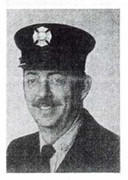
Fireman Louis Monteleone for rescuing three unconscious people from a burning apartment at 298 Sumpter Street on January 15, 1978.
ROBERT L. SCHERIFF FF. LAD. 120 OFF-DUTY DEC. 22, 1979 1980 AMERICAN LEGION
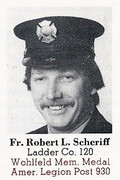
On December 22, 1979 Fireman Robert L. Scheriff, off duty, rescued three people from a four car accident on the Interboro Parkway. In true Hollywood tradition the cars exploded in a fireball just as Scheriff pulled the last person from the wreck. He received the American Legion Fire Department Post No. 930 Mark M Wohlfeld Memorial Medal for this rescue.
MICHAEL P. HARRINGTON FF. LAD. 120 JUL. 25, 1980 1981 CONRAN
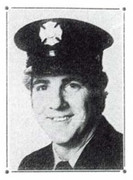
Firefighter Michael P. Harrington made a rope rescue from a seventh floor window at 375 Blake Avenue on July 25, 1980.
KEVIN D. HEANEY FF. LAD. 120 SEP. 4, 1982 1983 JOHNSTON
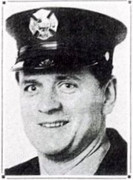
Firefighter Kevin D. Heaney rescued a resident and fellow firefighter from a burning fire apartment on September 4, 1982 at 1912 Bergen Street. He received the Albert S. Johnston Medal for his daring rescue.
PAUL J. MC FADDEN FF. LAD. 120 JUN. 24, 1983 1984 KENNY

Firefighter Paul J. McFadden rescued five people from 354 Chauncy Street on June 24, 1983.
DENNIS FARRELL FF. LAD. 120 MAR. 18, 1988 1989 MARTIN
Firefighter Dennis Farrell received the Chief Joseph R. Martin Medal for rescuing a three year old boy from his crib in the fire apartment on March 18, 1988.
MICHAEL T. KELLY FF. LAD. 120 MAY 29, 1992 1993 THOMPSON

Firefighter Michael T. Kelly with only nine months on the job rescued a nine year old boy from his burning apartment at 1965 Bergen Street on May 29, 1992. He received the Commissioner Edward Thompson Medal for this extraordinary rescue.
MICHAEL P. CUMMINGS FF LAD. 120 JUL. 30, 2000 2001 BROOKLYN CITIZENS
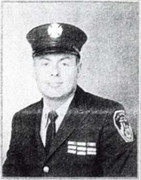
On July 30, 2000 two members of Ladder 120 rescued a family of five from a thirteenth floor apartment at 315 Lavonia Avenue. Fireman Michael P. Cummings received the Brooklyn Citizen Medal. Trapped in the bedroom of the fire apartment FF Cummings gave up his mask to the barely conscious children until the fire was knocked down in the living room and kitchen.
DENNIS GORDON LT. LAD 120 JUL. 30, 2000 2001 BONNER

On July 30, 2000 two members of Ladder 120 rescued a family of five from a thirteenth floor apartment at 315 Lavonia Avenue. Lieutenant Dennis Gordon received the Hugh Bonner Medal. Trapped in the bedroom of the fire apartment Lt Gordon gave up his mask to the barely conscious children until the fire was knocked down in the living room and kitchen.
LAWRENCE E. TOMPKINS LT. LAD. 120 MAY 5, 2005 2006 JOHNSON
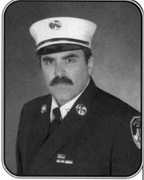
Lt. Lawrence E. Tompkins was awarded the Albert S. Johnston Medal for the successful rescue of a senior citizen who happened to also be an amputee from a fire on the second floor at 393 Powell Street.
GLEN J. MERKITCH FF. LAD. 120 DEC. 11, 2006 2007 CRIMMONS
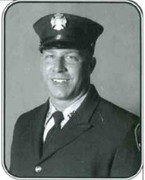
FF Glen J. Merkitch rescued a civilian on the floor above at a 2nd floor job at 2132A Fulton Street/Rockaway Ave. He found Theodore Dinkins wedged between a bed and the wall and proceeded to drag him to the front of the building to the window where L120′s bucket was in position to carry the occupant to the street. For his actions, FF Merkitch was awarded the Thomas E. Crimmons Medal
LARRY D. SCHNEDKENBURGER, FF. LAD. 120 MAR. 20, 2006 2007 PULASKI
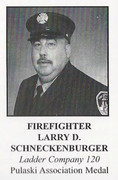
FF Larry D. Schneckenburger was awarded the Pulaski Association Medal in 2007 for his quick thinking actions in front of quarters on March 20th, 2006. FF Schneckenburger witnessed a gunfight at the same time children were being dismissed from the adjacent school and immediately put himself in harm?s way. He ushered many kids to safety while a total of 17 shots were fired and one teacher was struck twice in the leg
JOHN P. DREW FF LAD. 120 DEC 7, 2005 2006 MARTIN
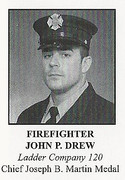
FF John P. Drew was awarded the Chief Joseph B. Martin Medal in 2007 for his actions at a fire at 348 Chester Street on December 27th, 2005. As any FF from Watkins St can attest, a box at the "Marcus Garvey" buildings presents many unique challenges and variations. FF Drew rescued Mary Patterson (a relative of former heavyweight boxer Floyd Patterson) from the top floor
PETER E. CARROLL FF LAD. 120 AUG. 5, 2011 2012 JOHNSON
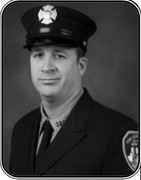
FF Peter E. Carroll made a daring rescue of a 40 year old woman on the floor above of a lightweight construction duplex apartment at 340 Marion Street on August 25, 2011. (which occurred as signal 10-70 was transmitted for water delivery problems).
MICHAEL P. RICHARDSON FF LAD. 120 OCT. 7, 2012 2013 COLUMBIA SOCIETY
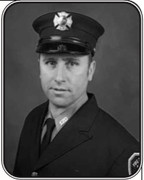
FF Michael P. Richardson was awarded the 2013 Columbia Society Medal for operating above the fire in deteriorating conditions and rescuing a 55 year old man who was unconscious in his bed at Box 1636 which was transmitted for a heavy fire in the store of a 2 story brick adjacent to E 283 quarters on the night of October 7, 2012.
CHRISTOPHER G. EYSSER CAPT. LAD. 120 JUL. 6, 2013 2014 JOHNSON
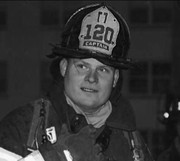
Captain Christopher G. Eysser rescued 2 unconscious children in the rear bedroom at a 3 story LRFPMD at 373 Blake Ave on July 6, 2013.
MICHAEL MEYER FF. LAD. 120 DEC. 14, 2016 2017 TREVOR/WARREN
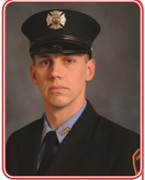
On December 14th 2016 FF Meyer had the most coveted position in the FDNY, Ladder 120- Irons. Ladder 120 responded to Box 77-1675 only a few blocks from quarters and the company effected the rescue of seven 10-45s from the top floor apartment of a project building. FF Meyer acted decisively under extreme stress and fire conditions.
MICHAEL THOMPSON CAPT. LAD. 120 DEC. 14, 2016 2017 BROOKLYN CITIZENS
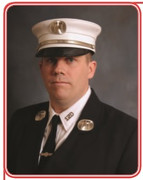
Capt. Mike Thomson received the 2017 FDNY Brooklyn Citizens award for actions at Box 77-1675 at address 260 Stone Ave. Captain Thomson reacted decisively and showed steadfast leadership under extreme conditions. Captain Thomson acted selflessly and under the greatest traditions of Watkins Street and the FDNY.
BRIAN CROSS FF. LAD. 120 DEC. 14, 2016 2017 HOLY NAME SOCIETY
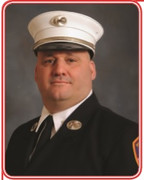
FF Brian Cross was pivotal in saving the lives of multiple people in the Brownsville section of Brooklyn at Box 77-1675 at address 260 Stone Ave. Using his body as a shield he carried A young boy past the flames to the stairwell where he handed him off and turned back for others. In all seven victims, one of whom ultimately expired, were rescued at this fire.
Battalion 44 Medals:
THOMAS YASVIN, JR. FF. BAT. 44 FEB. 6, 1949 1950 PRENTICE
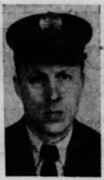
Firefighter Thomas Yasvin, Battalion 44 Aide, rescued a woman from a burning 4th floor tenement apartment upon arrival and carried her to safety.
FRANK T. TUTTLEMONDO BAT. CHIEF BAT. 44 AUG. 13, 1980 1981 CRIMMINS - POSTHUMOUS
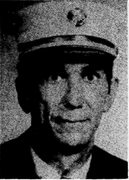
Chief Frank Tuttlemondo sacrificed his own life to shelter firefighters from Engine 227 in collapsing building at Box 1672, 124 Osborn Street on August 13, 1980.
LODDs:
FIREFIGHTER MORTIMER A. ROBERTS ENGINE 231 February 6, 1901
FF Roberts was 34 and had a wife and 5 children. FF Roberts' widow was awarded $10000 due to negligence of construction workers who left debris in street without warnings. Engine 231 responded over dirt piles left in road and FF Roberts was thrown from apparatus.

FIREFIGHTER HENRY J. KAISER ENGINE 231 April 6, 1912
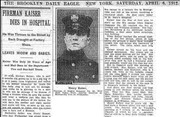
Four firemen from Engine 131 (now Engine 231) were working on a second floor fire escape when they were hit by a backdraft. The four fell in a heap on the ground and three of the four sprang up and went back to work. The fourth was Fireman Henry J. Kaiser of Engine 131, who lay white and inert. He failed to respond when first aid was given. He was placed in an ambulance unconscious and taken to the Bradford Street Hospital where he died three days later. He was only thirty years old, a member of the Department for two years and was married with two small children. The fire was in a four-story factory at Livonia and William Avenues and was one of the fieriest to visit the Brownsville section of Brooklyn for many years. The fire ate the core out of the brick factory and was valued at $60,000.
FIREFIGHTER FREDERICK V. ERB ENGINE 231 July 23, 1934
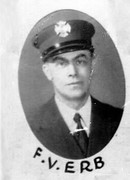
Answering a false alarm at 8:30 in the morning, Fireman Frederick Erb, was killed when the car of Battalion Chief Herbert Downward collided with a taxicab on East New York Avenue and Rockaway Parkway. Erb, who was thirty-nine years old and lived at 104-19 107th Street, Richmond Hill, Queens, struck his head against a curbstone when he was pitched from behind the steering wheel. His skull was fractured. He was attached to Engine 231 and was detailed to drive the Chief.
BATTALION CHIEF EUGENE G. DOWD BATTALION 44 January 27, 1955
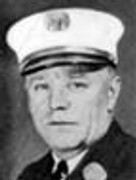
On May 4, 1949 Battalion Chief Eugene G. Dowd operated at a fire on Pitkin and Saratoga Avenues [on May 4, 1949]. He wrote in his own Fire Report that he was not feeling well after the fire. He went on Medical Leave and later returned to light duty until his retirement on a three-quarters disability pension on March 1, 1954. Chief Dowd died on January 27, 1955 of a heart attack. On February 9, 1956 the Board of Trustees of the Fire Department Pension Fund determined his death to have been in the line of duty. Chief Dowd joined the Department on November 1, 1928 and was assigned to Engine 224. He served in Engine 227 as a Fireman and in Engines 240 and 231 as a Lieutenant. He was appointed Captain on August 23, 1943 and assigned to Engine 214 where he served until June 17, 1948. He was promoted to Battalion Chief on June 16, 1948 and assigned to the 44th Battalion. Chief Dowd was fifty-four years old at the time of his death
FIREFIGHTER ROBERT A. MEILL LADDER 120 July 1, 1961
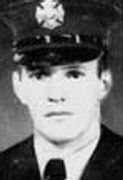
FF Meill, a 3rd grade FF died on July 1st, 1961 when, as he was operating, the roof collapsed during a 4 alarm fire at 196 Junius Street. FF Meill was survived by his wife, Eleanor.
BATTALION CHIEF FRANK T. TUTTLEMONDO BATTALION 44 August 13, 1980

BC Tuttlemondo died while operating at 124 Osbourne Street during a fire in a 3 story vacant which he correctly assumed had squatters inside at 4:30AM. The Chief heroically would use his own body to shield a fellow FF during a collapse which would in fact save the members? life. He was survived by his wife Jenny and 2 kids, Thomas and Katherine.
Brownsville:

http://forgotten-ny.com/2005/06/brownsville-and-east-new-york-brooklyn/
http://www.oldnycphotos.com/brownsville.html
http://lightbox.time.com/2012/01/31/brownsville-brooklyn/#1


Note - respects to Engine 231/Ladder 120/Battalion 44 excellent website - http://watkinsst.com/ - visit for additional information
EDWARD W. STIEHLER FF. ENG. 231 JAN. 30, 1922 1923 KENNY

On January. 30th, 1922 ? FF Steihler was hung by his ankles by his comrades ?pendulum style? from a cornice of a 3 story building at 251 Christopher Ave. to effect the rescue of 5 people who were not within reach of ladders, had no fire escape, and were ready to jump if not for his quick actions.
EDWARD F. GROSS LT. ENG. 231 AUG. 22, 1924 1925 CRIMMINS
On August 22nd, 1924 Lt. Edward F. Gross rescued a young girl at 2:43AM at 319 Osbourne Street. He carried the girl out via portable ladder without a hoseline in place.
BENJAMIN LEVY CAPT. ENG. 231 1936 1937 STEPHENSON

The Stephenson Medal was awarded to Captain Levy in 1936 for having maintained the best disciplined and most highly efficient company in the Department. Captain Levy would command E231 for an astonishing 27 years!
EMANUEL FRIED LT. ENG. 231 DEC. 11, 1946 1947 FDR
Awarded for his participation in the removal of a woman from the ruins of a fire and a building collapse at 489 W 184th Street at 11:59PM on December 11, 1946.
EDWARD V. WETZEL LT. ENG. 231 NOV. 4, 1965 1966 STIEFEL

On November 4th, 1965 Lt. Wetzel had a confirmed report of children trapped at 712 Stone Ave at 7:20PM. He crawled on his belly under the flames and past the fire to the rear bedroom where he found two children. Shielding them with his own body, he crawled once again past the fire and handed their limp bodies to his awaiting men. The children would survive the harrowing ordeal thanks to Lt. Wetzel?s quick instincts which were done without a mask and before a hoseline was in place.
JOSEPH A. CONIGLIO CAPT. ENG. 231 MAY 14, 1989 1990 CONNELL

On May 14th1989 ,E 231, under the command of Capt Coniglio, responded to a project fire at 251 Osbourne Street. The job would turn out to be a long stretch to the 5th floor as the Captain entered the apartment well before a hoseline was in place. He was informed that 3 people were trapped in the rearmost bedroom. He quickly made the last room where he physically pulled a woman back in who was on the edge ready to jump. As he awaited water, he would share his air with the three occupants thereby preventing them from further panic and sure certain death.
Ladder 120 Medals:
JAMES J. MOONEY CAPT. LAD. 120 1917 STEPHENSON
Captain James F. Mooney in was awarded the Stephenson Medal for having the best disciplined company in 1916.
FRANCIS P. J. DONLON FF. LAD. 120 DEC. 21, 1929 1930 DEPARTMENT
Four days before Christmas, Firemen Francis P. J. Donlon and Charles T. Leary, Jr. rescued a mother and her four children from 445 Watkins Street
CHARLES T. LEARY, JR. FF. LAD. 120 DEC. 21, 1929 1930 DEPARTMENT
FF Charles T. Leary rescued a mother and her four children from 445 Watkins Street
AUGUSTUS KETTLER FF. LAD. 120 AUG. 7, 1929 1930 BROOKLYN CITIZENS

On August 7, 1929 Fireman Augustus Kettler received the Brooklyn Citizen Medal for rescuing a couple from a fire at 136 Thatford Avenue
HENRY ROHRBACH LT. LAD. 120 AUG. 7, 1929 1930 DEPARTMENT

On August 7, 1929, Lieutenant Henry Rohrbach received a Department Medal for rescuing a couple from a fire at 136 Thatford Avenue
FRANK R. MAGAN FF. LAD. 120 MAR. 17, 1930 1931 BROOKLYN CITIZENS

St. Patrick's Day 1930, Fireman Frank H. Magan rescued a father and his two children from 277 Watkins Street.
CHARLES H. SMITH FF. LAD. 120 NOV. 3, 1933 1934 TREVOR-WARREN
On November 3, 1934 two members of Ladder 120 rescued two people at 361 Bristol Street. The Emily Trevor-Mary B. Warren Medal was awarded to Fireman Charles H. Smith.
ROLAND G. CHURBUCK FF. LAD. 120 NOV. 3, 1933 1934 BROOKLYN CITIZENS
Roland G. Churbuck rescued two people at 361 Bristol Street.
VICTOR F. ROSSI FF. LAD. 120 OCT. 21, 1950 1951 JAMES GORDON BENNETT

Fireman Victor F. Rossi on October 21, 1950 rescued two women from 162 Glenmore Avenue. Fireman Rossi earned the James Gordon Bennett Medal, the oldest medal awarded for bravery each year.
VICTOR F. ROSSI FF. LAD. 120 OCT. 31, 1952 1953 HUGH BONNER

On October 31, 1952 Fireman Rossi earned the Hugh Bonner Medal for capturing a culprit who was trying to steal the 44th Battalion?s car from in front of quarters
VICTOR F. ROSSI FF. LAD. 120 OCT. 21, 1950 1954 HARRY M. ARCHER

Fireman Victor F. Rossi on October 21, 1950 rescued two women from 162 Glenmore Avenue. Fireman Rossi earned the James Gordon Bennett Medal. It was also the best rescue in a three year period and he earned the Doctor Harry M. Archer Medal in 1954. This medal is given only to a James Gordon Bennett Medal winner once every three years.
JOHN F. FINNEGAN LT. LAD. 120 JUN. 4, 1958 1959 BROOKLYN CITIZENS

Lieutenant John F. Finnegan rescued a little girl from her burning apartment at 99 Belmont Street on June 4, 1958
CURT A. LANDGREBE LT. LAD. 120 DEC. 5, 1963 1964 DOUGHERTY

Lieutenant Curt A. Landgrebe rescued an eight year old boy from his burning apartment at 29 Hinsdale Street on December 5, 1963.
CURT A. LANDGREBE LT. LAD. 120 MAY 10, 1965 1966 BROOKLYN CITIZENS

On May 10, 1965, Lieutenant Curt A. Landgrebe rescued a woman from 426 Snediker Avenue.
DANIEL J. TRACY FF. LAD. 120 MAR. 25, 1965 1966 THOMPSON

Fireman Daniel J. Tracy earned three medals in three years. The first medal, the Commissioner Edward Thompson Medal was awarded on March 25, 1965 for rescuing five children from an apartment fire at 593 Howard Avenue.
EUGENE P. TIMMONS LT. LAD. 120 NOV. 4, 1965 1966 KANE

For his heroic work at 712 Stone Avenue on November 4, 1965, Lieutenant Eugene P. Timmons received the Vincent J. Kane Medal for rescuing a small boy from a burning apartment.
DANIEL J. TRACY FF. LAD. 120 APR. 23, 1966 1967 BRUMMER

FF Tracy rescued two people from 273 Amboy Street on April 23, 1966.
DANIEL J. TRACY FF. LAD. 120 JUL. 21, 1967 1968 BROOKLYN CITIZENS

FF Tracy rescued a child from 1586 St. Marks Avenue on July 21, 1967 at extreme personal risk.
JOHN J. CONNOLLY FF. LAD. 120 JUN. 22, 1968 1969 EMERALD

On June 22, 1968 Fireman John J. Connolly rescued a mother and her two children from 358 Hinsdale Street. The Emerald Society Medal was awarded Fireman Connolly for this rescue.
RUDOLPH A. GRECO FF. LAD. 120 APR. 3, 1970 1971 MC ELLIGOTT

On April 3, 1970 FF Rudy Greco rescued an elderly man from the 3rd floor at 1961 Bergen Street. For his actions he was awarded John J. McElligott Medal
THOMAS J. CHERRY FF. LAD. 120 SEP. 22, 1972 1973 BROOKMAN

Fireman Thomas J. Cherry rescued a child from a burning window sill at 705 Saratoga Avenue on September 22, 1972. He swung pendulum fashion across an eight foot gap between the adjoining fire escape and window to rescue the child.
LOUIS MONTELEONE FF. LAD. 120 JAN. 15, 1978 1979 BROOKLYN CITIZENS

Fireman Louis Monteleone for rescuing three unconscious people from a burning apartment at 298 Sumpter Street on January 15, 1978.
ROBERT L. SCHERIFF FF. LAD. 120 OFF-DUTY DEC. 22, 1979 1980 AMERICAN LEGION

On December 22, 1979 Fireman Robert L. Scheriff, off duty, rescued three people from a four car accident on the Interboro Parkway. In true Hollywood tradition the cars exploded in a fireball just as Scheriff pulled the last person from the wreck. He received the American Legion Fire Department Post No. 930 Mark M Wohlfeld Memorial Medal for this rescue.
MICHAEL P. HARRINGTON FF. LAD. 120 JUL. 25, 1980 1981 CONRAN

Firefighter Michael P. Harrington made a rope rescue from a seventh floor window at 375 Blake Avenue on July 25, 1980.
KEVIN D. HEANEY FF. LAD. 120 SEP. 4, 1982 1983 JOHNSTON

Firefighter Kevin D. Heaney rescued a resident and fellow firefighter from a burning fire apartment on September 4, 1982 at 1912 Bergen Street. He received the Albert S. Johnston Medal for his daring rescue.
PAUL J. MC FADDEN FF. LAD. 120 JUN. 24, 1983 1984 KENNY

Firefighter Paul J. McFadden rescued five people from 354 Chauncy Street on June 24, 1983.
DENNIS FARRELL FF. LAD. 120 MAR. 18, 1988 1989 MARTIN
Firefighter Dennis Farrell received the Chief Joseph R. Martin Medal for rescuing a three year old boy from his crib in the fire apartment on March 18, 1988.
MICHAEL T. KELLY FF. LAD. 120 MAY 29, 1992 1993 THOMPSON

Firefighter Michael T. Kelly with only nine months on the job rescued a nine year old boy from his burning apartment at 1965 Bergen Street on May 29, 1992. He received the Commissioner Edward Thompson Medal for this extraordinary rescue.
MICHAEL P. CUMMINGS FF LAD. 120 JUL. 30, 2000 2001 BROOKLYN CITIZENS

On July 30, 2000 two members of Ladder 120 rescued a family of five from a thirteenth floor apartment at 315 Lavonia Avenue. Fireman Michael P. Cummings received the Brooklyn Citizen Medal. Trapped in the bedroom of the fire apartment FF Cummings gave up his mask to the barely conscious children until the fire was knocked down in the living room and kitchen.
DENNIS GORDON LT. LAD 120 JUL. 30, 2000 2001 BONNER

On July 30, 2000 two members of Ladder 120 rescued a family of five from a thirteenth floor apartment at 315 Lavonia Avenue. Lieutenant Dennis Gordon received the Hugh Bonner Medal. Trapped in the bedroom of the fire apartment Lt Gordon gave up his mask to the barely conscious children until the fire was knocked down in the living room and kitchen.
LAWRENCE E. TOMPKINS LT. LAD. 120 MAY 5, 2005 2006 JOHNSON

Lt. Lawrence E. Tompkins was awarded the Albert S. Johnston Medal for the successful rescue of a senior citizen who happened to also be an amputee from a fire on the second floor at 393 Powell Street.
GLEN J. MERKITCH FF. LAD. 120 DEC. 11, 2006 2007 CRIMMONS

FF Glen J. Merkitch rescued a civilian on the floor above at a 2nd floor job at 2132A Fulton Street/Rockaway Ave. He found Theodore Dinkins wedged between a bed and the wall and proceeded to drag him to the front of the building to the window where L120′s bucket was in position to carry the occupant to the street. For his actions, FF Merkitch was awarded the Thomas E. Crimmons Medal
LARRY D. SCHNEDKENBURGER, FF. LAD. 120 MAR. 20, 2006 2007 PULASKI

FF Larry D. Schneckenburger was awarded the Pulaski Association Medal in 2007 for his quick thinking actions in front of quarters on March 20th, 2006. FF Schneckenburger witnessed a gunfight at the same time children were being dismissed from the adjacent school and immediately put himself in harm?s way. He ushered many kids to safety while a total of 17 shots were fired and one teacher was struck twice in the leg
JOHN P. DREW FF LAD. 120 DEC 7, 2005 2006 MARTIN

FF John P. Drew was awarded the Chief Joseph B. Martin Medal in 2007 for his actions at a fire at 348 Chester Street on December 27th, 2005. As any FF from Watkins St can attest, a box at the "Marcus Garvey" buildings presents many unique challenges and variations. FF Drew rescued Mary Patterson (a relative of former heavyweight boxer Floyd Patterson) from the top floor
PETER E. CARROLL FF LAD. 120 AUG. 5, 2011 2012 JOHNSON

FF Peter E. Carroll made a daring rescue of a 40 year old woman on the floor above of a lightweight construction duplex apartment at 340 Marion Street on August 25, 2011. (which occurred as signal 10-70 was transmitted for water delivery problems).
MICHAEL P. RICHARDSON FF LAD. 120 OCT. 7, 2012 2013 COLUMBIA SOCIETY

FF Michael P. Richardson was awarded the 2013 Columbia Society Medal for operating above the fire in deteriorating conditions and rescuing a 55 year old man who was unconscious in his bed at Box 1636 which was transmitted for a heavy fire in the store of a 2 story brick adjacent to E 283 quarters on the night of October 7, 2012.
CHRISTOPHER G. EYSSER CAPT. LAD. 120 JUL. 6, 2013 2014 JOHNSON

Captain Christopher G. Eysser rescued 2 unconscious children in the rear bedroom at a 3 story LRFPMD at 373 Blake Ave on July 6, 2013.
MICHAEL MEYER FF. LAD. 120 DEC. 14, 2016 2017 TREVOR/WARREN

On December 14th 2016 FF Meyer had the most coveted position in the FDNY, Ladder 120- Irons. Ladder 120 responded to Box 77-1675 only a few blocks from quarters and the company effected the rescue of seven 10-45s from the top floor apartment of a project building. FF Meyer acted decisively under extreme stress and fire conditions.
MICHAEL THOMPSON CAPT. LAD. 120 DEC. 14, 2016 2017 BROOKLYN CITIZENS

Capt. Mike Thomson received the 2017 FDNY Brooklyn Citizens award for actions at Box 77-1675 at address 260 Stone Ave. Captain Thomson reacted decisively and showed steadfast leadership under extreme conditions. Captain Thomson acted selflessly and under the greatest traditions of Watkins Street and the FDNY.
BRIAN CROSS FF. LAD. 120 DEC. 14, 2016 2017 HOLY NAME SOCIETY

FF Brian Cross was pivotal in saving the lives of multiple people in the Brownsville section of Brooklyn at Box 77-1675 at address 260 Stone Ave. Using his body as a shield he carried A young boy past the flames to the stairwell where he handed him off and turned back for others. In all seven victims, one of whom ultimately expired, were rescued at this fire.
Battalion 44 Medals:
THOMAS YASVIN, JR. FF. BAT. 44 FEB. 6, 1949 1950 PRENTICE

Firefighter Thomas Yasvin, Battalion 44 Aide, rescued a woman from a burning 4th floor tenement apartment upon arrival and carried her to safety.
FRANK T. TUTTLEMONDO BAT. CHIEF BAT. 44 AUG. 13, 1980 1981 CRIMMINS - POSTHUMOUS

Chief Frank Tuttlemondo sacrificed his own life to shelter firefighters from Engine 227 in collapsing building at Box 1672, 124 Osborn Street on August 13, 1980.
LODDs:
FIREFIGHTER MORTIMER A. ROBERTS ENGINE 231 February 6, 1901
FF Roberts was 34 and had a wife and 5 children. FF Roberts' widow was awarded $10000 due to negligence of construction workers who left debris in street without warnings. Engine 231 responded over dirt piles left in road and FF Roberts was thrown from apparatus.

FIREFIGHTER HENRY J. KAISER ENGINE 231 April 6, 1912

Four firemen from Engine 131 (now Engine 231) were working on a second floor fire escape when they were hit by a backdraft. The four fell in a heap on the ground and three of the four sprang up and went back to work. The fourth was Fireman Henry J. Kaiser of Engine 131, who lay white and inert. He failed to respond when first aid was given. He was placed in an ambulance unconscious and taken to the Bradford Street Hospital where he died three days later. He was only thirty years old, a member of the Department for two years and was married with two small children. The fire was in a four-story factory at Livonia and William Avenues and was one of the fieriest to visit the Brownsville section of Brooklyn for many years. The fire ate the core out of the brick factory and was valued at $60,000.
FIREFIGHTER FREDERICK V. ERB ENGINE 231 July 23, 1934

Answering a false alarm at 8:30 in the morning, Fireman Frederick Erb, was killed when the car of Battalion Chief Herbert Downward collided with a taxicab on East New York Avenue and Rockaway Parkway. Erb, who was thirty-nine years old and lived at 104-19 107th Street, Richmond Hill, Queens, struck his head against a curbstone when he was pitched from behind the steering wheel. His skull was fractured. He was attached to Engine 231 and was detailed to drive the Chief.
BATTALION CHIEF EUGENE G. DOWD BATTALION 44 January 27, 1955

On May 4, 1949 Battalion Chief Eugene G. Dowd operated at a fire on Pitkin and Saratoga Avenues [on May 4, 1949]. He wrote in his own Fire Report that he was not feeling well after the fire. He went on Medical Leave and later returned to light duty until his retirement on a three-quarters disability pension on March 1, 1954. Chief Dowd died on January 27, 1955 of a heart attack. On February 9, 1956 the Board of Trustees of the Fire Department Pension Fund determined his death to have been in the line of duty. Chief Dowd joined the Department on November 1, 1928 and was assigned to Engine 224. He served in Engine 227 as a Fireman and in Engines 240 and 231 as a Lieutenant. He was appointed Captain on August 23, 1943 and assigned to Engine 214 where he served until June 17, 1948. He was promoted to Battalion Chief on June 16, 1948 and assigned to the 44th Battalion. Chief Dowd was fifty-four years old at the time of his death
FIREFIGHTER ROBERT A. MEILL LADDER 120 July 1, 1961

FF Meill, a 3rd grade FF died on July 1st, 1961 when, as he was operating, the roof collapsed during a 4 alarm fire at 196 Junius Street. FF Meill was survived by his wife, Eleanor.
BATTALION CHIEF FRANK T. TUTTLEMONDO BATTALION 44 August 13, 1980

BC Tuttlemondo died while operating at 124 Osbourne Street during a fire in a 3 story vacant which he correctly assumed had squatters inside at 4:30AM. The Chief heroically would use his own body to shield a fellow FF during a collapse which would in fact save the members? life. He was survived by his wife Jenny and 2 kids, Thomas and Katherine.
Brownsville:

http://forgotten-ny.com/2005/06/brownsville-and-east-new-york-brooklyn/
http://www.oldnycphotos.com/brownsville.html
http://lightbox.time.com/2012/01/31/brownsville-brooklyn/#1


Note - respects to Engine 231/Ladder 120/Battalion 44 excellent website - http://watkinsst.com/ - visit for additional information

